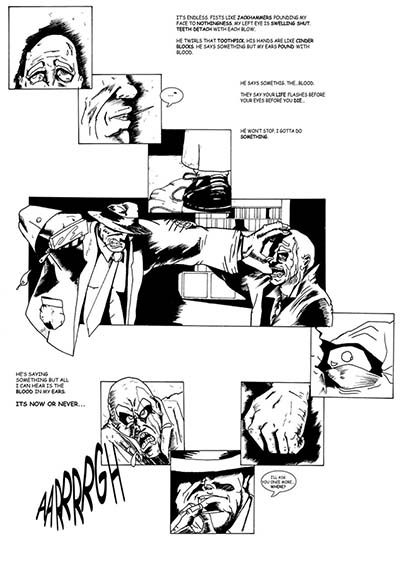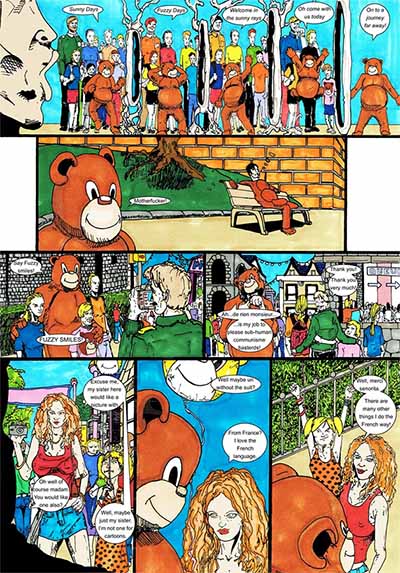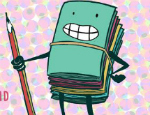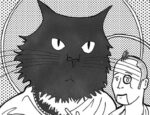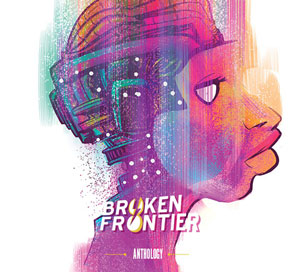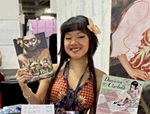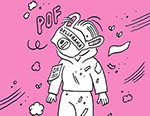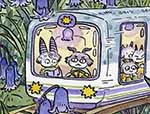Founded in the early part of the pandemic Guru Comics are a London-based micropublisher specialising in genre fiction comics that range from horror to science fiction, crime noir to satire. Set up initially as a family affair their publishing ethos has grown to include providing a platform for new voices on the scene. We caught up with co-founder Talvinder Sehmbi to chat about their line-up of titles, representation in comics, and establishing yourself as a fixture on the self-publishing circuit…

ANDY OLIVER: Tell us first about how Guru Comics came to be and who makes up the team?
TALVINDER SEHMBI: Guru Comics was founded by myself, Talvinder, my brother Pardeep Sehmbi and our cousin Harminder Chana (above). Both Pardeep and I studied film and television at college and university – the three of us grew up together being obsessed with and swapping movies, comics, CDs and the early days of manga/anime in the UK. Moving into uninspiring professional careers, Pardeep and Harminder were seeking a creative outlet and started writing and drawing short comics, which they’d take to comic-cons looking for advice and guidance from creators they met. Meanwhile I was freelancing in the film and TV industry and found myself getting disillusioned with the industry as I found myself banging on a glass ceiling to tell the stories I wanted to tell. By this time Pardeep and Harminder had completed their first comic, The Flying Fuzzy Bears. I thought it was so cool and was inspired to convert my dreams from screen to the page, and started writing and drawing Toothpick, a Raymond Chandler meets Scorsese detective story.
From Toothpick #1 by Talvinder Sehmbi
Around 2019, once all three of us decided to endeavour on this journey under one umbrella…Guru Comics! Despite launching around the pandemic we have been able to publish 7 comics including 2 volumes of our anthology, The Third Eye. This has been cool as we’ve been able to recruit friends and family who showed interest in telling stories and given them the opportunity to do so through the medium of comics. For instance a friend from work, Alfie Griffiths, contributed to The Third Eye Volume 2 and felt so inspired we have since been able to publish his first full length comic, The Church in Yellow.
AO: Can you give us an overview of the kind of books you have put out so far, their premises, and the genres you publish?
SEHMBI: So we’re pretty diverse with our influences and this is reflected in our work:
Toothpick – a film noir-inspired detective story about a P.I. that is hired by a mysterious femme fatale to track down a suitcase…except the suitcase is full of human bones and he’s not the only one looking for them, so is the mob!
The Fuzzy Flying Bears – ever been to Disneyland and wondered how the guy in the Mickey Mouse costume stays sane? The Flying Fuzzy Bears is a mature comic about the shenanigans the staff of the Flying Fuzzy Bears theme park get up to behind the scenes.

Castro! – Castro is a bounty hunter but he doesn’t just hunt any bounty, he goes after monsters! In issue #1 he is hired by a sexy red-headed saloon owner to hunt a group of ogres terrorising her local town…but is she all she appears to be?!
The Church in Yellow – a blend of Lovecraftian horror and mystery as group of young friends discover the terrifying truth about the occult hidden in their South London community.
The Third Eye Volumes 1 & 2 – are anthologies made up of a series of sci-fi, fantasy and horror stories that we’ve used as a way of showcasing the works of our full crew.

AO: How would you describe the ethos of Guru Comics? Who would you define as your target audience?
SEHMBI: When we started Guru Comics we wanted to tell stories that that we liked. But none of us had a background in publishing so we never approached any publishers (we didn’t know how to really) and we were put off by mainstream comics. We started reading more creator-owned works such as Usagi Yojimbo, Love & Rockets and Saga and we wanted to reflect that in our work. In that sense we have bit of a DIY punk band mentality in that we try and do everything ourselves – writing, penciling, inking, colouring etc. As we’ve progressed and done more comics cons we’ve realised we’re a very niche table at comic con, in that we don’t see many creators or characters that look like us – three British Asians, Sikhs – so we try to actively incorporate Asian characters in the comics – for example in issue 1, Castro meets Darshan Singh, a Sikh warrior whose origin story is very cool (it involves the British Raj and pirates!) and will be explored as the series goes on.
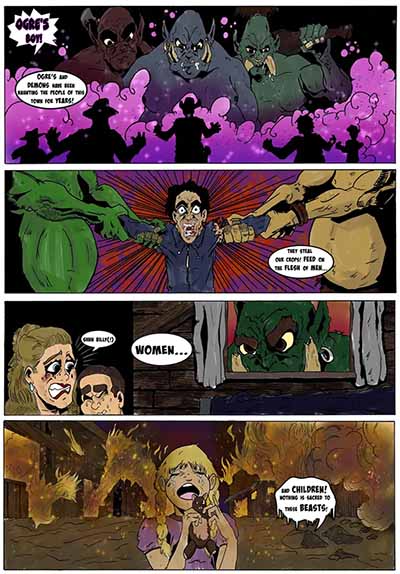
From Castro! by Talvinder Sehmbi
I would say our target audience is probably adults from about 18-40. Our main goal is to produce fun, entertaining comics and tell good stories that will keep the reader coming back.
AO: Genre fiction comics are often a much harder sell when it comes to the small press scene so if you were pitching to a potential customer what would you say makes your approach to horror, sci-fi, etc. stand out?
SEHMBI: One of the main approaches we have is to have a really eyecatching cover – we use our references such as movies and artists we love such as Frank Frazetta for ideas for our covers. At a comic con when we have people approach our table and ask about Castro! for example, we give them the synopsis and hit them with references they would be familiar that influenced the work, such as Ninja Scroll and Eastwood’s Man With no Name character. With Toothpick I would reference my love for Humphrey Bogart, The Godfather and wrestling. We realised that with small press it’s a harder sell if the character is an unknown (something we noticed with mainstream comics regurgitating the same characters again and again) so to make them more appealing we try to give a point of reference i.e. if you liked that, give this a chance, we think you’ll like it.
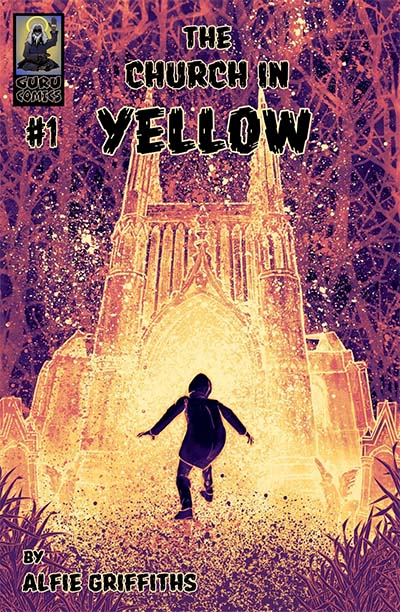
AO: You publish both ongoing and anthology series. To what degree do you see Guru Comics as a platform for new creators?
SEHMBI: Most of the creators that we’ve worked with thus far are friends and family. A lot of of them just didn’t know how to tell the stories they wanted too and for them it was a case of confidence on how to tell a story using the comic book format. What we have done is almost like a tutorial with them on how to create comics, certain conventions to follow. We then give them a guide, i.e. you have 5 pages in the anthology, let’s tell your story, and we pair them up with an artist if they don’t draw themselves. If they feel like the enjoy the process and they want to try a full-length issue we then help them develop that with the story beats. I see Guru Comics as a very positive platform for potential creators that want to tell stories but don’t know how and give them the opportunity to try comics as an ideal format.
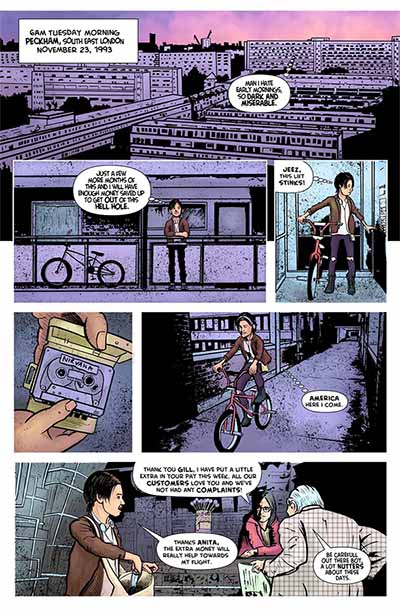
From The Church in Yellow #1 by Alfie Griffiths
SEHMBI: How much of a learning curve has Guru Comics been in its early period, both in terms of developing your creative styles and from the publishing perspective? What lessons have you learnt along the way?
SEHMBI: It’s been a huge learning curve since we started. Speaking for myself from a creative point of view I’ve been able to develop my skills as an illustrator tenfold since doing a mentorship programme with Creative Access to the point that the issues of Toothpick from issue #1-3 look like a different artist altogether! I’ve also been experimenting with different writing techniques such as writing Toothpick issue #1 in the ‘Marvel method’ and most comics hereafter have been done with near enough a full script which I found allowed me to speed up as an illustrator.
As a collective we encourage and provide constructive criticism of one another’s work and share ideas on how to approach something. We’ve also tried to develop our skills by going from pencils, pens and paper to drawing digitally and embracing colour in our works, something we were hesitant to do at first but wanted to learn colour theory etc.
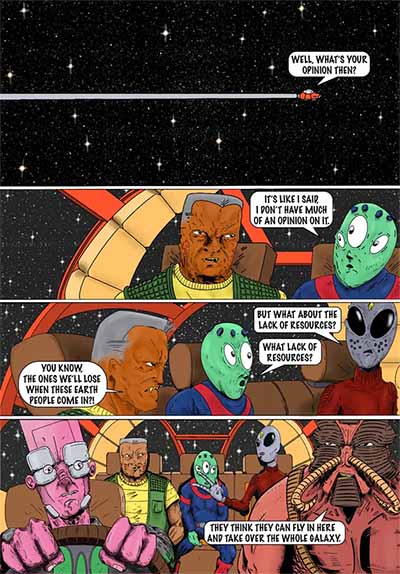
Oliver Johnson and Pardeep Sehmbi’s ‘Road Trip’ from The Third Eye anthology
From a publishing perspective this was vital as we wanted the comics to appeal to the largest audience possible and if you’re going to make comics set in intergalactic worlds, add some colour and bring them to life! One criticism of our work we’ve discussed amongst the three of us is that our comics are very male-centric, it’s bit of a dude-fest and this is something we’re actively trying to address in that we intend our comics to be for everyone and we want creators from all backgrounds to feel comfortable pitching an idea to us.
One thing I personally learned as an editor was that I like helping other creators cut loose. For example when Alfie first started working with us, I’d review his work and be like dude you have 6 pages, take this tiny panel and make it a splash page, make it dramatic and more cinematic! And did he deliver or what! (See the final page of ‘Octospace’ in The Third Eye volume 2).
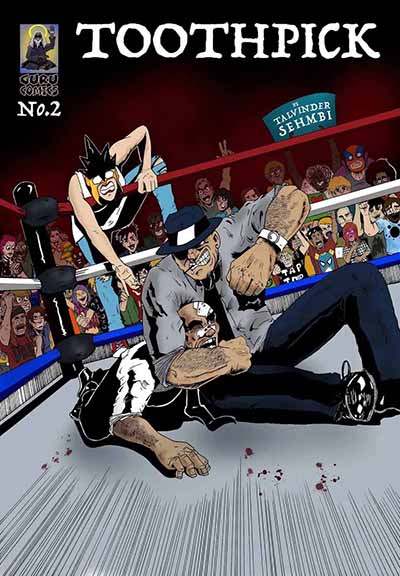
We also learned a lot of technical things such the quality of the paper we publish our comics on and have had really good feedback from people at comics cons on the quality of the comics. We also decided to publish our anthologies in a different, larger format as a way of making them seem more like a showcase. We feel like we’re always learning new things, especially when we go to comic cons and chat with other creators.
AO: How have you found interacting with the wider comics community in order to boost your profile? What advice would you give those first starting to table at conventions and fairs?
SEHMBI: We’ve had both really positive and the odd negative experience at interacting with the wider comics community. I would say in general the other creators we’ve met at comics cons have been great, very welcoming and open to giving advice and suggestions on comic cons to try out. I think we’ve found Thought Bubble insanely welcoming and such a great experience for us which I think has helped us boost our profile and network with some really cool creators.
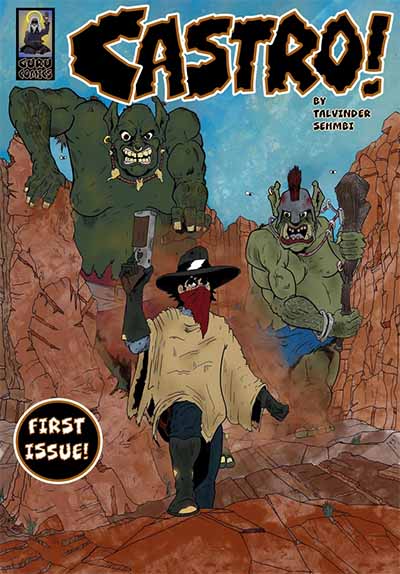
We have found other comic cons a bit difficult to get into as we haven’t published anything mainstream and we don’t have any mainstream creators working on our comics so this has been somewhat frustrating and something we discuss amongst ourselves of how to progress. Do we try and get a cover done from a more mainstream creator? We don’t think that’s really us so it’s like trying to find a solution to be more appealing but still be the aforementioned punk band of comics.
For any first-timer doing their first table at a convention, I would advise them to make sure they bring a buddy so they can do get a chance to network, make sure you have a card with your socials, have snacks and loads of water! In all honesty we’re all a bit nervous and awkward (even after our first convention) but remember as awkward as you feel, the person next to you or across the aisle feels the same so don’t hesitate to ever go over and say hi and introduce yourself. We’re all in this together! (A compliment on their work never hurts either). If you see us at a con, come say hi!
From The Flying Fuzzy Bears by Pardeep Sehmbi and Harminder Chana
AO: What can we expect from the future from Guru Comics? What are you working on next?
SEHMBI: In the immediate future, we’re happy to announce that we’ll be at Thought Bubble again this year and we hope to have three new comics out. By May 2025 we will release Toothpick issue #3, and from there we have my brother Pardeep’s first full-length comic Infiltrator, and by November, issue #2 of The Church in Yellow. By the end of the year we will be putting a call out for The Third Eye volume 3 and hope to have a few new creators involved.
We’re also exploring the idea of publishing a comic through Kickstarter but have been a bit reluctant to do so yet.
In the long-term, we’re hoping to grow, do more regular comic cons and get our comics more readily available to a growing audience. We’d also love to give up our day jobs and do this full time too but baby steps.
You can find the Guru Comics online store here
Review by Andy Oliver





